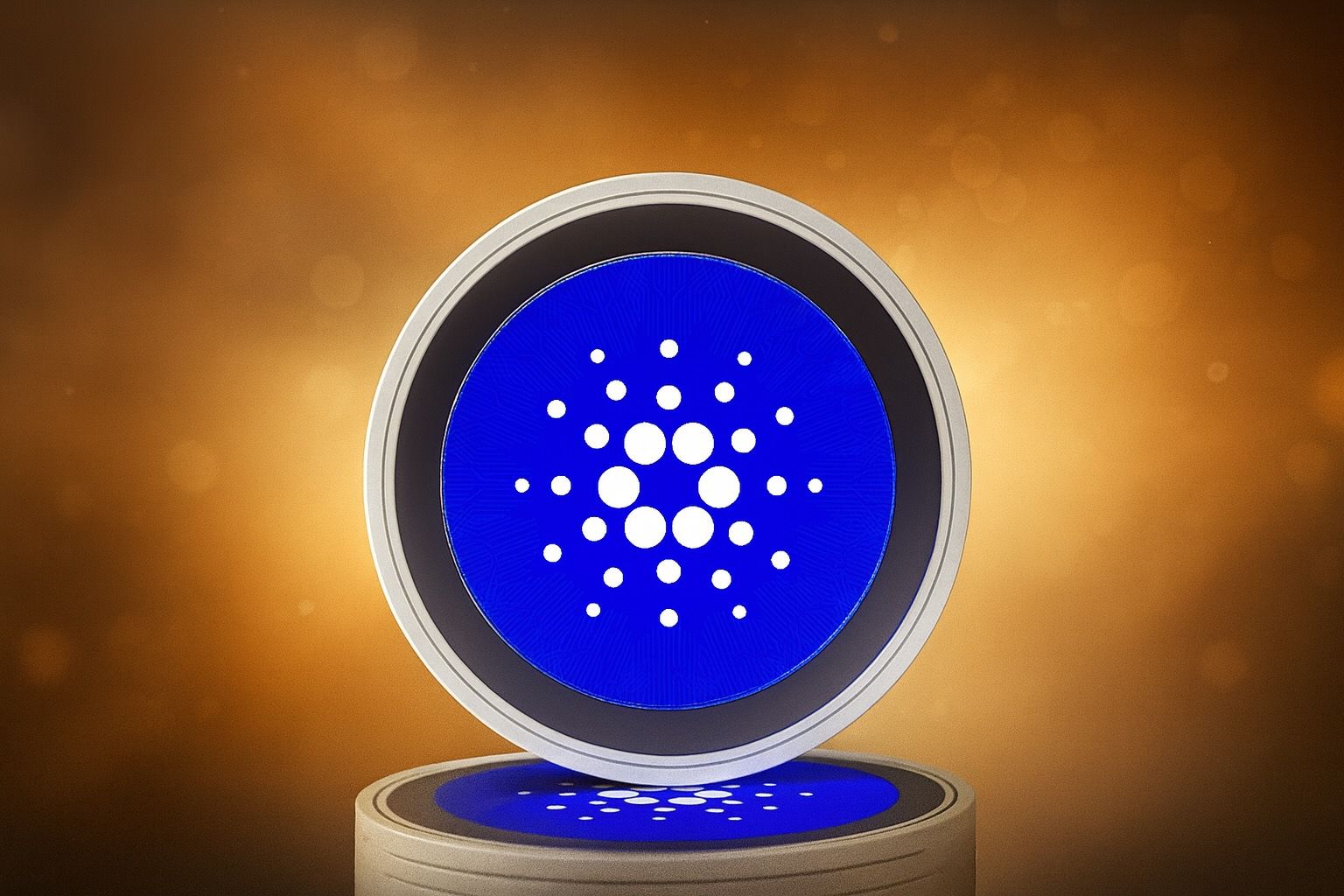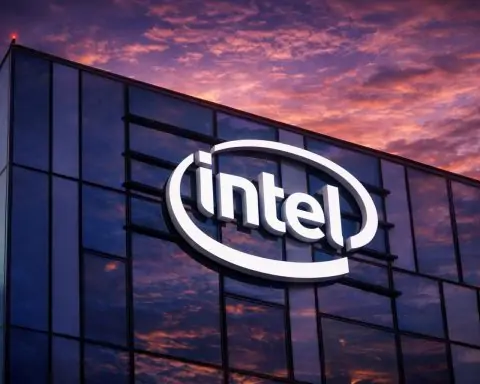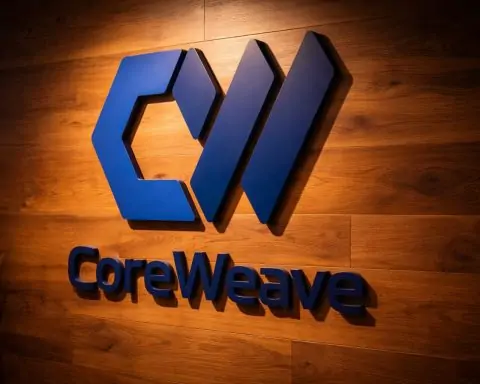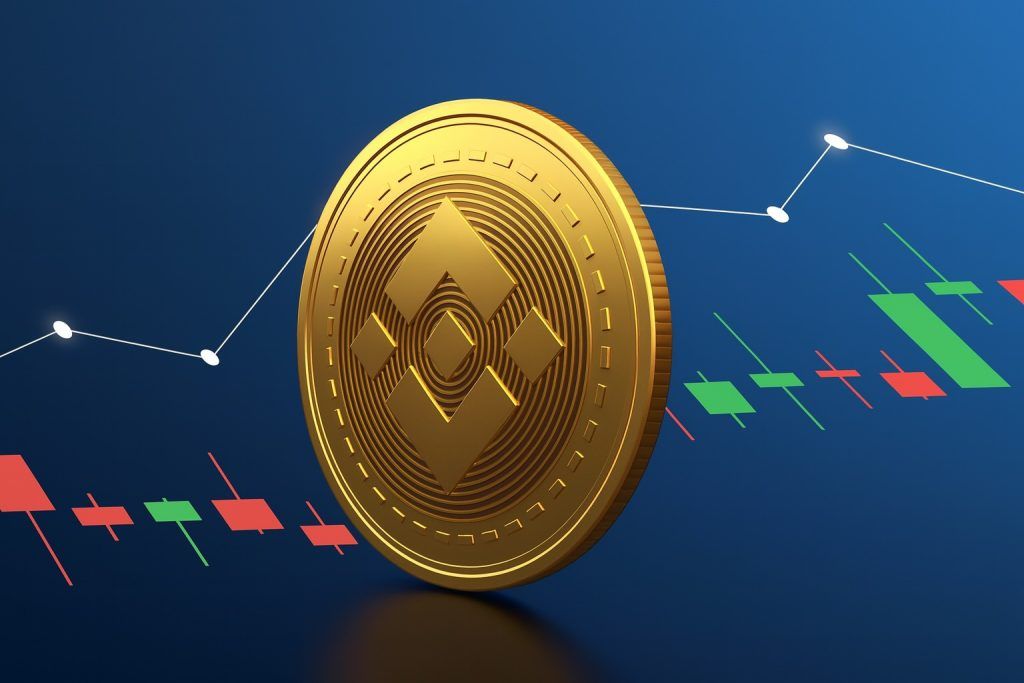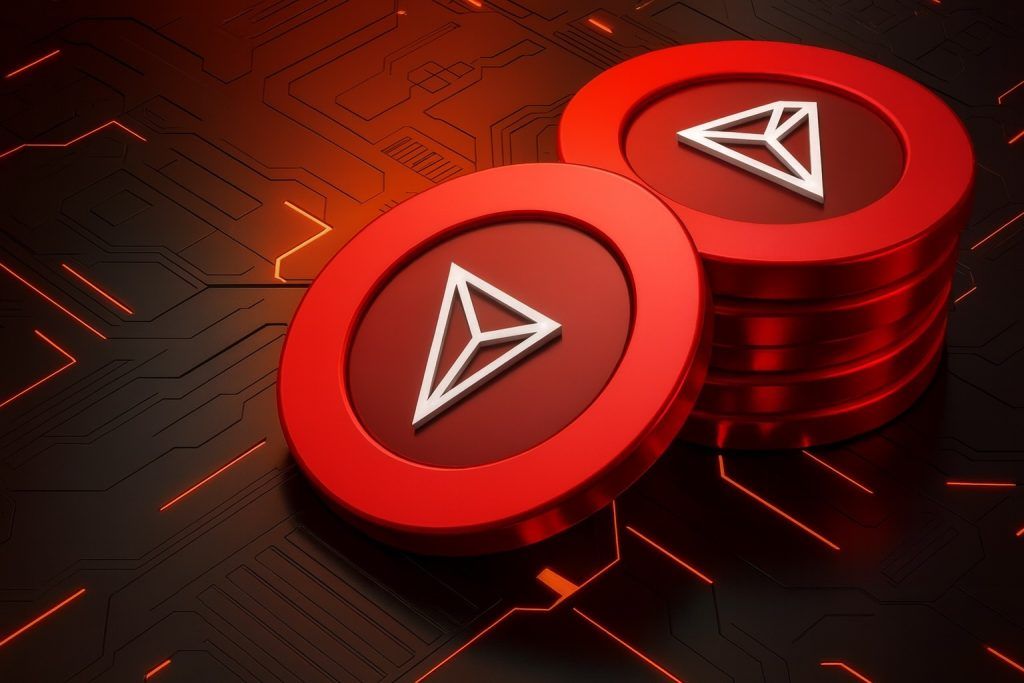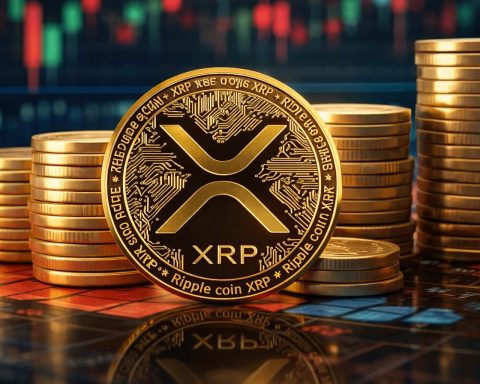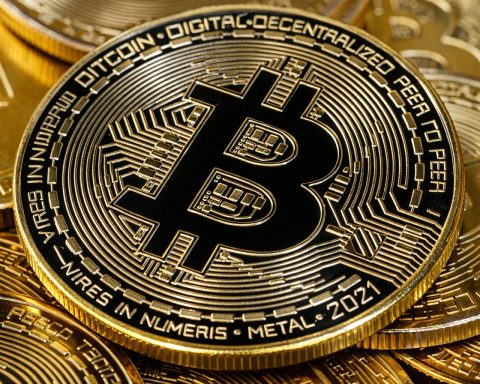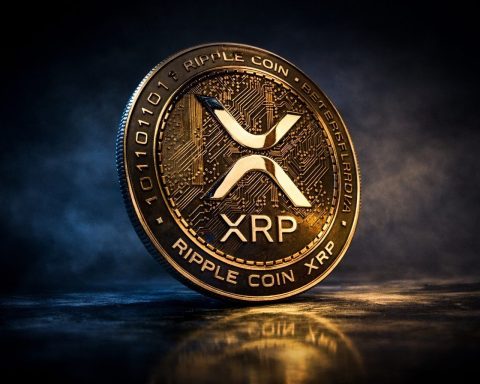Key Facts (as of 5 October 2025)
- Price & market cap: Cardano’s ADA token trades around $0.84–$0.86. YCharts data show the price at roughly $0.8399 on 5 Oct 2025 [1]. CoinMarketCap lists ADA at ~$0.8585, giving a market capitalisation of ~$30.75 billion and 24‑hour trading volume around $1.3 billion [2]. CoinLore’s 4 Oct daily data show a close of $0.8394 with volume of $720 million [3].
- State of the network: The ecosystem hosts ~2,009 projects, 10.90 million native tokens and 1.34 million delegated wallets [4]. Cardano uses the energy‑efficient Ouroboros proof‑of‑stake protocol and emphasises peer‑reviewed research and formal verification.
- Governance upgrade: The Chang hard fork (January 2025) moved Cardano into the Voltaire era, giving ADA holders on‑chain governance rights. The Plomin hard fork, approved by stake‑pool operators and a temporary constitutional committee, made this the first community‑decided hard fork in blockchain history [5]. SanchoNet, a testnet for CIP‑1694, has over 32 stake‑pool operators and is implementing phases 3‑5 of on‑chain governance [6].
- Recent news: The SEC postponed a decision on Grayscale’s Cardano ETF until 26 October 2025; REX‑Osprey filed for a Cardano staking ETF; whales accumulated roughly 70 million ADA (~$60 million) [7]. Cardano partnered with NEAR Protocol, allowing ADA holders to swap tokens across 20+ chains without bridges [8].
- Technical progress: The Mithril team released distribution 2537.0, supporting node v10.5.1, stabilising CLI commands and adding ARM binaries [9]. The Hydra team enabled deposit recovery, improved chain‑following and error reporting, and prepared for partial fan‑outs [10]. Plutus and consensus teams improved performance and drafted the Ouroboros Leios consensus proposal [11]. The Chang hard fork introduced on‑chain governance; sidechains like Midnight (privacy) and the cross‑chain NEAR Intents integration expand functionality.
- Regulatory outlook: Bloomberg analysts estimate ~87 % probability of approval for Grayscale’s ADA ETF, with the SEC’s final decision due by 26 Oct 2025 [12]. The SEC’s May 2025 guidance clarified that proof‑of‑stake staking is not a securities transaction, and August rules allow in‑kind redemptions, clearing the way for staking ETFs [13]. Polymarket shows a 76 % probability of ADA ETF approval [14].
- Price forecasts: InvestingHaven predicts ADA could range $0.66–$1.88 in 2025 and average $1.21 [15]. Benzinga’s 2025 scenarios give a bearish $0.836, average $0.937 and bullish $1.04 [16]. Cryptoninjas expects ADA to trade $1.10–$1.30 in October 2025 and reach $1.40–$1.70 by year‑end [17].
- Sentiment: Technical analyses show ADA trading within a $0.74–$0.98 range with whales accumulating; MACD indicates buyer strength but sellers still dominate [18]. Cross‑chain partnerships and on‑chain governance upgrades provide long‑term optimism but price remains far below previous highs.
What Is Cardano?
Cardano is a third‑generation blockchain designed to be scalable, sustainable and interoperable. Created in 2017 by Ethereum co‑founder Charles Hoskinson, Cardano uses a proof‑of‑stake (PoS) consensus called Ouroboros. Instead of emphasising speed at all costs, Cardano embraces academic peer review and formal methods to ensure safety. Its ADA token powers transactions, staking and governance. Smart contracts run via the Plutus platform, while native tokens can be minted without additional layers.
Market Performance and Investor Interest
Price, Capitalisation and Volume
October 2025 finds ADA in the middle of a consolidation. On 5 Oct 2025, YCharts recorded ADA at $0.8399 [19], while CoinMarketCap listed it slightly higher at ~$0.8585, giving a market cap of $30.75 billion and 24‑h volume of $1.3 billion [20]. CoinLore’s data from 4 Oct showed a $0.8394 close with $720 million in volume [21].
Despite the price stagnation, on‑chain indicators remain strong. The network hosts more than 2,009 projects and has 1.34 million delegated wallets, while 10.90 million native tokens exist across 220,944 policies [22]. Delegated representatives (DReps) allow ADA holders to delegate voting power, and 1,465 DReps were registered by September 2025 [23].
Whales, ETFs and Market Sentiment
News in early October centres on institutional products and whale behaviour. CoinMarketCap’s AI news service reports that the U.S. SEC delayed the Grayscale Cardano ETF decision to 26 Oct 2025, while REX‑Osprey filed to launch a Cardano staking ETF, part of 21 single‑asset ETFs [24]. Whales have accumulated ~70 million ADA (~$60 million) near the $0.85 price level [25], indicating large holders expect appreciation.
An AInvest analysis notes that technical indicators—relative strength index (RSI) and MACD—suggest bullish momentum. Wave‑count analysis identifies a potential break to $1.84 if ADA clears resistance at $0.98. The article also highlights a 76 % probability on Polymarket for ADA ETF approval and says Cardano’s treasury holds 1.37 billion ADA (~$1.1 billion at current prices) [26]. However, daily transactions have fallen 36 % and market cap is down 13 % year‑to‑date [27], implying slower usage.
Price Forecasts
Analysts remain divided. InvestingHaven sees ADA ranging $0.66–$1.88 in 2025 with an average target of $1.21 and a bullish scenario of $2.36 if it breaks major Fibonacci resistance [28]. Benzinga offers bearish, average and bullish scenarios of $0.836, $0.937 and $1.04 respectively for 2025 [29], with long‑term targets of $5–$6 by 2030 if adoption accelerates [30]. Cryptoninjas predicts ADA could trade $1.10–$1.30 in October 2025 and reach $1.40–$1.70 by December [31]. Long‑term speculation suggests $5–$7 by 2030 and up to $50 by 2050 in extreme scenarios [32]. These projections highlight both upside potential and the risk of slower adoption relative to competitors like Ethereum and Solana.
Recent News and Ecosystem Developments
ETF Delays and Whale Accumulation
The major narrative revolves around spot and staking ETFs. Grayscale seeks to convert its Cardano Trust into a spot ETF (ticker GADA) with 87 % approval odds [33]. REX‑Osprey filed a prospectus for a Cardano staking ETF, part of a wave of altcoin ETFs enabled by the SEC’s September 2025 approval of generic listing standards [34]. Analysts believe altcoin ETFs are virtually inevitable; Bloomberg forecasts a 90 % probability of approval [35]. The SEC’s May 2025 guidance clarifying that PoS staking is not a securities transaction and the August rule allowing in‑kind redemptions remove key regulatory hurdles [36].
Whales have taken notice. Reports indicate accumulation of ~70 million ADA around $0.85 [37], while the supply of ADA on exchanges continues to decline. However, U.Today notes that whale purchases slowed when the SEC delayed the ETF decision and that whales now wait for clarity [38].
NEAR Protocol Partnership and Cross‑Chain Swaps
In late September, Cardano partnered with NEAR Protocol using NEAR Intents, an abstraction framework enabling cross‑chain swaps without bridges. According to U.Today, NEAR Intents let users submit a desired swap; “solvers” execute the transaction across chains, obviating bridges. Hoskinson tweeted he was pleased to work with NEAR and said intents are the future of crypto [39]. The Currency Analytics explains that NEAR Intents allow ADA holders to swap tokens across more than 20 blockchains and 100+ assets without bridging, increasing liquidity and adoption [40]. Hoskinson called the NEAR team “great” and said Intents will power the future [41]. Coinpedia describes NEAR Intents as AI‑ready; cross‑chain integration benefits ADA users by eliminating bridging risk and boosting access to DeFi and NFTs [42].
Cardano Foundation Q2 2025 Report
The Cardano Foundation’s Q2 2025 report underscores real‑world utility. The foundation launched Veridian, a decentralised identity platform with iOS/Android apps for privacy‑preserving credential verification [43]. It partnered with the Pontifical Catholic University of Rio de Janeiro (PUC‑Rio) to establish ledger labs and develop blockchain solutions for renewable energy [44]. The foundation’s teams attended events like Paris Blockchain Week and GITEX Europe to discuss AI, digital identity and blockchain integration [45]. Educational outreach includes a redesigned Cardano Academy website and a new blockchain fundamentals course [46].
Stablecoin Liquidity and Meme‑Coin Rotation
The Tribune’s advertorial claims that the Cardano Foundation allocated millions of ADA to increase liquidity for Cardano‑based stablecoins, which could attract users and DeFi protocols [47]. It also hints at a Cardano‑focused ETF and suggests ADA could deliver 600 % gains if prices reclaim former highs [48]. At the same time, some investors are rotating capital into speculative meme‑coins, drawing liquidity away from ADA. However, these statements come from promotional press releases and should be treated cautiously.
Other Partnerships and Community Activities
Cardano’s ecosystem continues to expand:
- Educational resources: The Cardano Foundation and EMURGO launched a Cardano Academy course covering blockchain fundamentals [49].
- Public sector adoption: The Veridian identity platform allows privacy‑preserving credential verification and has real‑world deployments [50].
- Renewable energy research: Collaboration with PUC‑Rio explores blockchain use in renewable energy and ledger labs [51].
- Community governance: Over 32 stake‑pool operators joined SanchoNet, the testnet implementing CIP‑1694 governance. The network is adding delegated representatives (DReps) and new voting options like abstain and no confidence [52].
- Intersect membership and budgets: DevCommunity reports that Intersect, the non‑profit membership organisation guiding Cardano governance, has 1,800 paid members and 2,700 associates. The 2025 budget allocates 350 million ADA across infrastructure, governance support, innovation, research and marketing [53].
Technical Developments: Hydra, Mithril, Leios and More
Cardano’s roadmap emphasises scalability, performance and decentralisation. Key 2025 developments include:
Hydra Layer‑2 Protocol
The Hydra team aims to provide a layer‑2 solution enabling fast, low‑fee micro‑transactions. The September 26 update lists several improvements: enabling deposit recovery when a Hydra head closes, better chain‑following even with no head events, improved error reporting via Blockfrost, configurable wait times for chain transactions, partial commits of tokens, and bug fixes [54]. Future priorities include documentation for committing script UTXOs, a partial fan‑out feature, an HTLC example, speed‑ups in chain following and a v0.23 release [55].
Mithril Stake‑Based Fast Sync
The Mithril team released distribution 2537.0, supporting Cardano node v10.5.1 and adding ARM binaries for devices like Raspberry Pi [56]. The update stabilises CLI commands and includes bug fixes. Work underway includes updating the DMQ protocol CIP, decentralising configuration parameters, supporting multiple proof systems and integrating a Haskell DMQ node [57]. These enhancements make it easier to bootstrap nodes quickly and support lightweight deployments, crucial for decentralised governance and IoT use cases.
Plutus and Consensus Improvements
The Plutus team has been improving the on‑chain evaluator and deserializer performance and added support for built‑in units and pairs to be activated at the next hard‑fork event [58]. The consensus team drafted the Ouroboros Leios CIP and improved log‑structured merge‑tree support, integrated a KES agent (key evolving signature), and released cardano-lmdb-simple 0.8.1.0 [59]. A SnapshotManager has been refactored, and network analysis for Leios has been published [60].
On‑Chain Governance and CIP‑1694
The Chang hard fork (January 2025) transitioned Cardano to the Voltaire era, enabling full on‑chain governance. The Plomin hard fork—approved by stake‑pool operators and a temporary constitutional committee—made this the first community‑voted hard fork [61]. CIP‑1694 introduces a governance model based on delegable voting rights through DReps, a constitutional committee and stake‑pool operators. SanchoNet provides a testing environment where phases 3‑5 of CIP‑1694 are being implemented; Blockfrost offers API access, and EMURGO released a serialization library for the Conway ledger [62].
Ouroboros Leios and Research Roadmap
A new consensus proposal, Ouroboros Leios, aims to separate the transaction selection, verification and consensus tasks to improve throughput. The consensus team released a second technical report and network analysis for Leios [63]. Meanwhile, the Voltaire governance model continues to evolve with proposals like CIP‑95 for liquid democracy, giving ADA holders more flexible delegation options [64].
Sidechains and Privacy
Cardano is expanding through sidechains. Midnight, a privacy‑focused sidechain, has seen enterprise interest; the Blockchain Reporter article notes that Midnight is attracting partnerships with major cloud providers and emphasises privacy and compliance [65]. The integration of NEAR Intents also acts as a de‑facto cross‑chain layer, complementing sidechain efforts.
Regulatory Environment
After years of uncertainty, U.S. regulatory clarity is improving for Cardano. The SEC’s May 2025 guidance confirmed that staking in proof‑of‑stake networks is not a securities transaction, removing a barrier for staking products [66]. In August 2025, the SEC allowed in‑kind redemptions for crypto ETFs, smoothing the operational path for spot and staking ETFs [67]. Analysts at Bloomberg and AInvest estimate 87–90 % probability of ADA ETF approval by late 2025 [68] [69].
Grayscale’s proposed GADA ETF would track the CoinDesk ADA Index and use Coinbase Custody. The SEC has until 26 October 2025 to approve or deny it [70]. A successful approval could set precedent for other altcoin ETFs; there are over 92 pending applications including Dogecoin and Polkadot [71].
Comparisons with Ethereum and Solana
Cardano competes with other smart‑contract platforms like Ethereum and Solana. Key distinctions include:
- Consensus mechanism: Cardano’s Ouroboros PoS is energy‑efficient and relies on cryptographic proofs, while Ethereum recently transitioned to PoS via The Merge. Solana uses Proof of History + PoS, enabling high throughput but at the cost of greater hardware requirements and occasional downtime.
- Development philosophy: Cardano emphasises peer‑reviewed research and formal verification, releasing features only after rigorous testing. This has resulted in slower dApp deployment compared with Ethereum and Solana, but advocates argue it leads to higher security and fewer exploits.
- Scalability: Cardano is scaling through layer‑2 solutions (Hydra), fast‑sync protocols (Mithril) and sidechains (Midnight, NEAR Intents). Ethereum uses rollups (Optimism, Arbitrum), while Solana scales via high throughput on‑chain and upcoming upgrades like Firedancer. Cardano’s approach spreads state across multiple heads and uses proof aggregation, potentially allowing parallel transaction processing with strong decentralisation.
- Ecosystem: Cardano has over 2,009 active projects [72], while Ethereum hosts thousands of dApps and Solana leads in NFT trading. Cardano’s DeFi total value locked (TVL) remains modest compared with peers, though partnerships like NEAR Intents and new stablecoins may boost DeFi participation.
Expert Commentary and Public Sentiment
- Charles Hoskinson, Cardano’s founder, predicted that crypto is 3–5 years away from taking over the world [73]. He praised NEAR Intents as “the future of crypto” [74] and applauded the NEAR team [75].
- Analysts at AInvest highlight robust technical indicators and note that Cardano’s treasury holds 1.37 billion ADA, providing ample funding for development [76]. They caution, however, that daily transactions and market cap have dropped, reflecting decreased on‑chain activity [77].
- CryptoSlate and Bloomberg argue that altcoin ETF approvals are now a matter of time given new listing standards [78] and that Cardano stands among five altcoins with the highest likelihood of approval [79].
- AMBCrypto points out that ADA remains ~34.6 % below its yearly high; MACD shows buyer strength but sellers dominate. Liquidity clusters around $0.84 and whales are accumulating, but market sentiment is cautious [80].
Outlook
Cardano’s performance in late 2025 is shaped by a mix of cautious optimism and technical progress. Prices hover around $0.85, far below 2021 highs, yet the network is achieving major milestones: on‑chain governance via the Chang upgrade, scalable layer‑2 solutions, cross‑chain interoperability with NEAR and robust real‑world deployments like Veridian. Upcoming catalysts include the Grayscale ADA ETF decision (26 Oct 2025), the release of Hydra v0.23 and further phases of CIP‑1694. Approval of a spot or staking ETF could increase institutional participation and push ADA toward analyst targets above $1. Conversely, delays or regulatory setbacks could keep the price range‑bound.
For now, Cardano remains a long‑term project focused on research, governance and sustainability rather than short‑term hype. Its success will depend on whether Hydra, Mithril and sidechains can deliver meaningful throughput, whether DeFi and NFTs gain traction, and whether governance experiments like DReps attract community engagement. Investors should weigh the potential upside of a scientifically grounded platform against the risks of slower adoption and intense competition from Ethereum, Solana and emerging layer‑1s.
References
1. ycharts.com, 2. coinmarketcap.com, 3. www.coinlore.com, 4. www.essentialcardano.io, 5. www.intersectmbo.org, 6. intersectmbo.org, 7. coinmarketcap.com, 8. u.today, 9. updates.cardano.intersectmbo.org, 10. updates.cardano.intersectmbo.org, 11. www.essentialcardano.io, 12. www.ainvest.com, 13. www.ainvest.com, 14. www.ainvest.com, 15. investinghaven.com, 16. www.benzinga.com, 17. www.cryptoninjas.net, 18. ambcrypto.com, 19. ycharts.com, 20. coinmarketcap.com, 21. www.coinlore.com, 22. www.essentialcardano.io, 23. www.essentialcardano.io, 24. coinmarketcap.com, 25. coinmarketcap.com, 26. www.ainvest.com, 27. www.ainvest.com, 28. investinghaven.com, 29. www.benzinga.com, 30. www.benzinga.com, 31. www.cryptoninjas.net, 32. www.cryptoninjas.net, 33. www.ainvest.com, 34. cryptoslate.com, 35. www.ainvest.com, 36. www.ainvest.com, 37. coinmarketcap.com, 38. u.today, 39. u.today, 40. thecurrencyanalytics.com, 41. thecurrencyanalytics.com, 42. coinpedia.org, 43. cardanofoundation.org, 44. cardanofoundation.org, 45. cardanofoundation.org, 46. cardanofoundation.org, 47. www.tribuneindia.com, 48. www.tribuneindia.com, 49. cardanofoundation.org, 50. cardanofoundation.org, 51. cardanofoundation.org, 52. intersectmbo.org, 53. devcommunity.io, 54. updates.cardano.intersectmbo.org, 55. updates.cardano.intersectmbo.org, 56. updates.cardano.intersectmbo.org, 57. updates.cardano.intersectmbo.org, 58. www.essentialcardano.io, 59. www.essentialcardano.io, 60. www.essentialcardano.io, 61. www.intersectmbo.org, 62. intersectmbo.org, 63. www.essentialcardano.io, 64. intersectmbo.org, 65. blockchainreporter.net, 66. www.ainvest.com, 67. www.ainvest.com, 68. www.ainvest.com, 69. www.ainvest.com, 70. www.ainvest.com, 71. www.ainvest.com, 72. www.essentialcardano.io, 73. ambcrypto.com, 74. u.today, 75. thecurrencyanalytics.com, 76. www.ainvest.com, 77. www.ainvest.com, 78. cryptoslate.com, 79. www.ainvest.com, 80. ambcrypto.com
